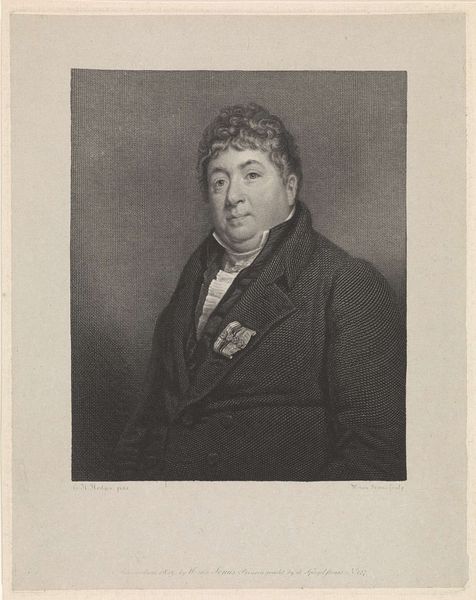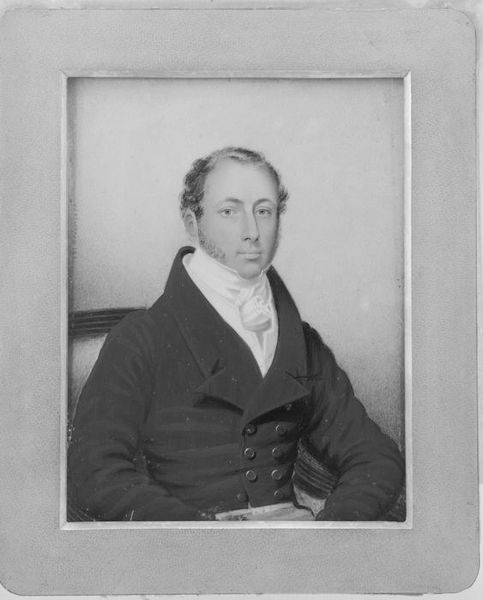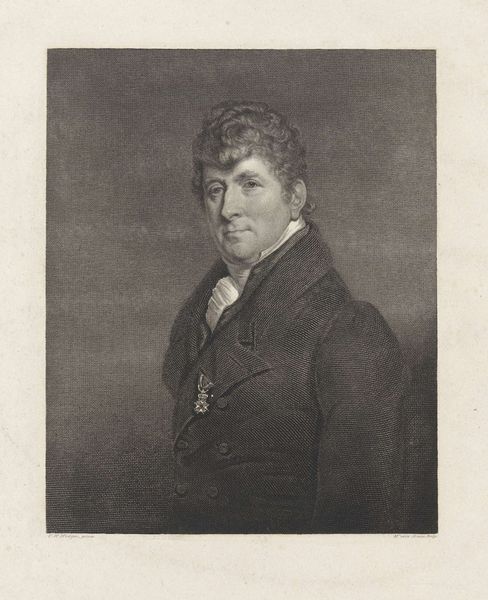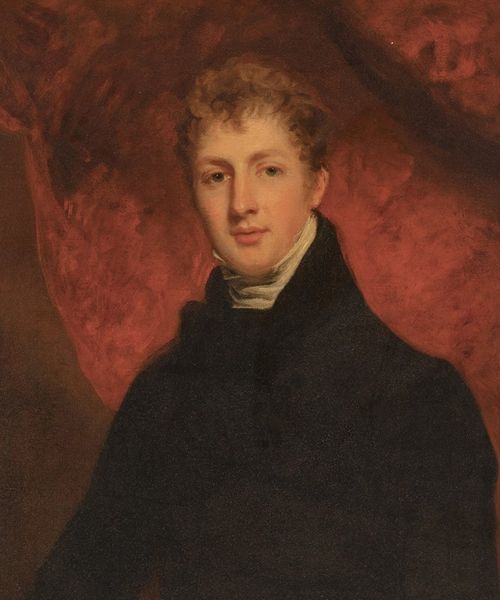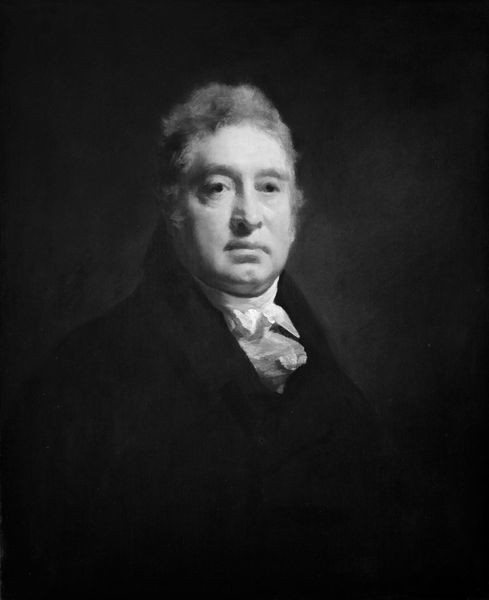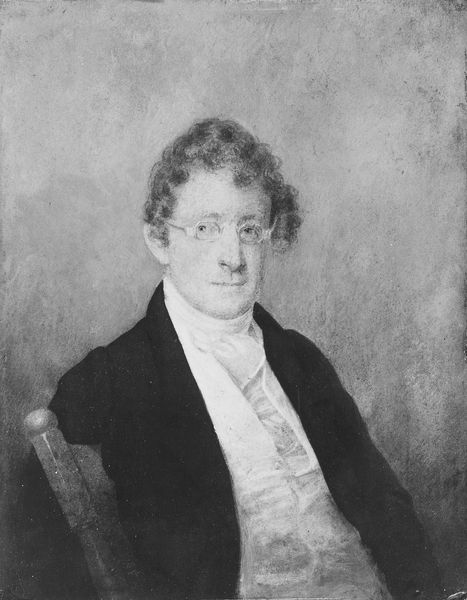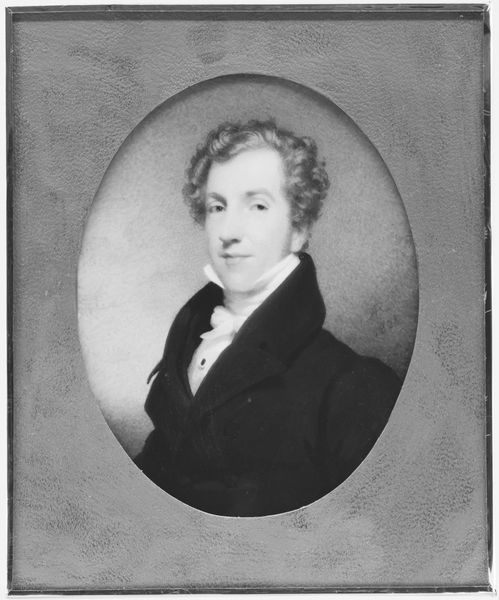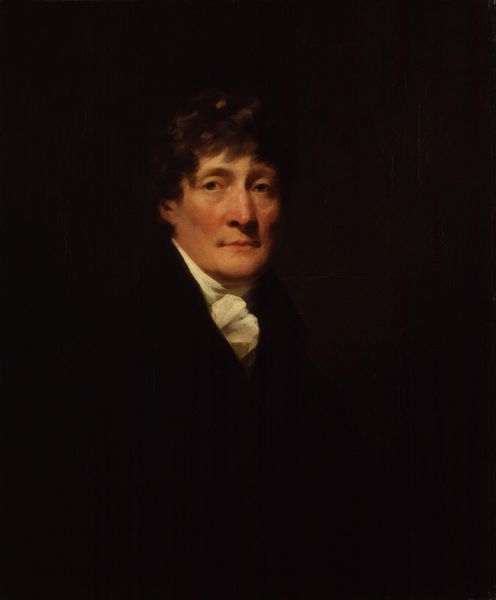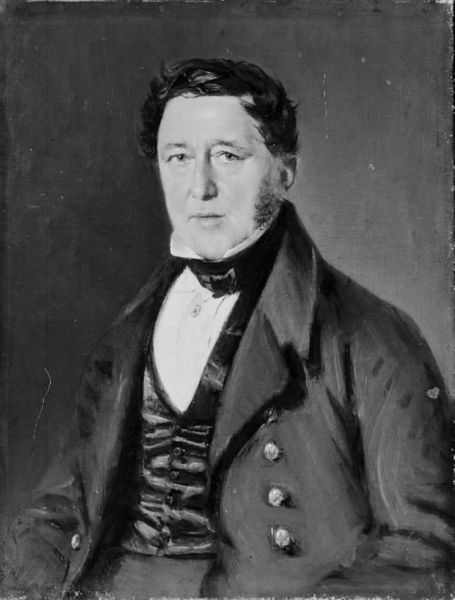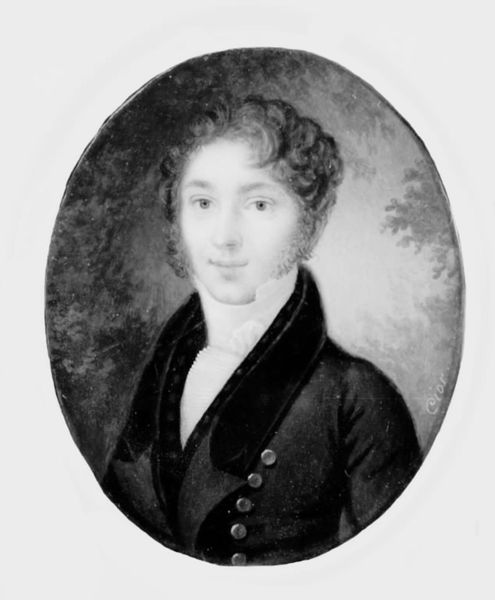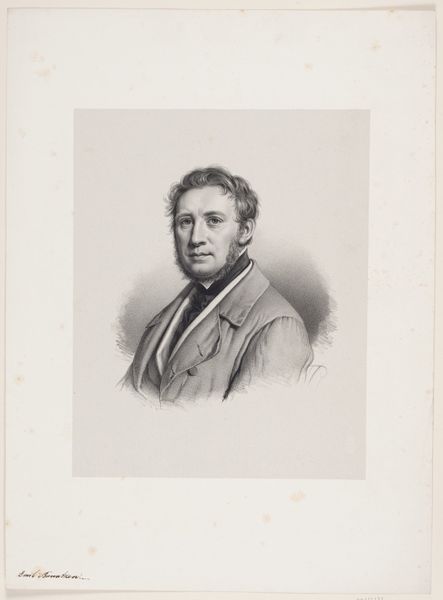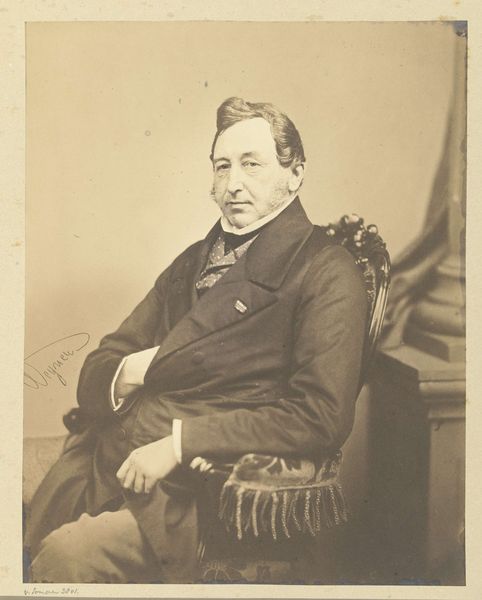
painting, oil-paint, canvas
#
portrait
#
neoclacissism
#
portrait
#
painting
#
oil-paint
#
canvas
#
history-painting
#
realism
Dimensions: 75.5 cm (height) x 63.5 cm (width) (Netto)
Curator: Oh, my. Doesn't he look rather… lost? Or perhaps he’s just seen something utterly shocking. Editor: I see a fascinating interplay of light and shadow defining the planes of his face in Henry Raeburn’s "Portrait of a Man," dating from 1810-1814, which can be found here at the Statens Museum for Kunst. Notice how Raeburn manipulates the oil paint to create volume and texture. Curator: Light and shadow indeed. But there's something more, isn't there? The slight downturn of his mouth, the somewhat unfocused gaze… I wonder what was on his mind. Or, dare I say, if he’d just had a really bad haircut. Editor: Ha! Perhaps. Yet focusing on the structure reveals a Neoclassical adherence to realism and idealization through controlled brushwork and composition, carefully placing his subject into history. Semiotically, the subdued palette speaks of reserve, yet the softness in his face is a sign of Romantic sensibility emerging during the era. Curator: You make him sound terribly serious. Maybe he was just a fellow who liked a good laugh but wasn’t keen on posing for hours. Artists! Always wanting us to stay still! Editor: Consider though, the implications of clothing: the dark, enveloping coat subtly separates him, setting him apart through monochrome as opposed to other portraits of the period, almost like he’s a character extracted from a much larger, grander scene. Curator: And all that darkness only heightens the paleness of his face. It makes me wonder, who was this man? I can't help but create an entire fictional life for him. Was he a poet, a philosopher? Editor: Precisely. Raeburn provides only minimal information. We're left to interpret, to speculate, using both visual clues and our own knowledge of the historical and artistic contexts to build narratives. It shows how one painting becomes more than a mere likeness. Curator: I suppose it does, doesn't it? I think I’ll take one last look and try and conjure a story about our sombre chap. Editor: It's quite wonderful how the formal elements provide the frame, but our subjective experience furnishes the narrative. Art in balance.
Comments
No comments
Be the first to comment and join the conversation on the ultimate creative platform.
